1.
The Language of Artistry
What is good bonsai design?
Wait! Before you start imagining a powerful surface root structure and perfect ramification, let’s cut right to the basics. Forget the individual elements and think about quality design. What indicates success in design?
Here are a few indications of design success:
- the design is evocative: it makes the viewer feel
- the design is provocative: it makes the viewer think
- the design seems natural: it could seemingly come directly from nature
- the design is cohesive: it has compositional integrity; it makes sense
- the design is interesting: it draws the viewer in
- the design is dynamic: it embodies life and vitality
- the design is descriptive: it tells a story of a place or of a life history
- the design is clever: it solves its own challenges
- the design has rhythm and flow: it is neither monotonous nor chaotic
How about, the design is artistic. This one phrase describes all of the above. As the artist, you have to communicate these things listed above to the viewer. For instance, if you want to portray a serene, beautiful, meadow maple or elm, you use artistic design elements of calm beauty, tranquility and elegance. If you want to portray a tortured, tenacious larch clinging precariously to a wind-whipped mountain ledge, you use artistic design elements of tumult, strength, precariousness and power (along with evidence of damage showing the struggle between life and death).
Now, you may ask, “how exactly do I do that?” Well, in order to communicate effectively, you must use the language of artistry. Remember? Those useful, artistic conventions that enhance and simplify the image that you want to portray as beautiful and meaningful. The coming chapters will detail some of these artistic design elements and discuss different, advisable ways to use them.
Caveat:
What if you don’t want to use any artistic fundamentals? Well, then you probably fail to communicate with the viewer. Reverse one of the elements in the list above and the design may begin to fray at the edges. Reverse two or more of them and the design will likely fall flat on its face.
Speaking the language of artistry
In order to imbue your bonsai with artistic design and composition (read: make it pleasing and evocative to viewers), you have to understand how to use the building blocks of artistry. We’re going to depart from strictly bonsai concerns now and begin with some of the basic elements of artistic communication.
This section details the fundamental building blocks of meaningful design. You will find that these simple little elements will define your work (for good or ill) whether you like it or not. If you understand these basics, you can control what your designs communicate. If you don't understand them, your designs may likely appear to be haphazard efforts.
These basics introduced below and their metaphoric equivalents are applicable to any art or craft, from architecture to music to painting to dance to print design to bonsai. This is just an introduction, however. There is more to this than is detailed here, but perhaps this can serve as a general introduction to these concepts and principles.
Line and Form
A significant portion of the basic vocabulary of artistic communication is found in line and form. Different kinds of lines and different forms (shapes) each can convey different meanings. These line/form definitions are somewhat universal in their connotation, even from culture to culture. To be effective in communicating artistically, you need to understand this basic vocabulary.
Here is a basic glossary for artistic visual communication with line and form, each with drawn line and bonsai form (trunk or branch) examples:
Vertical



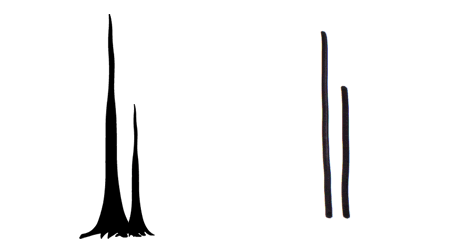
Perpendicular



Slanted
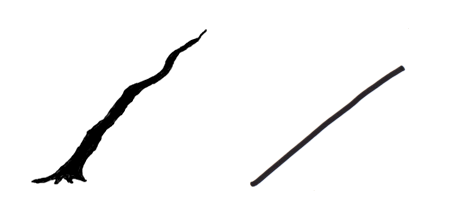
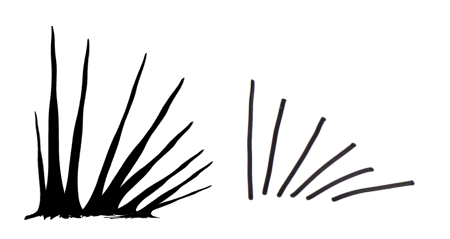

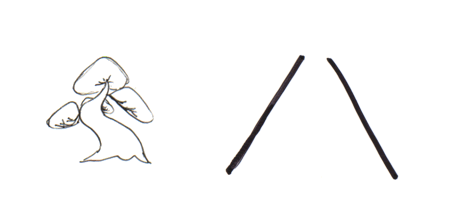
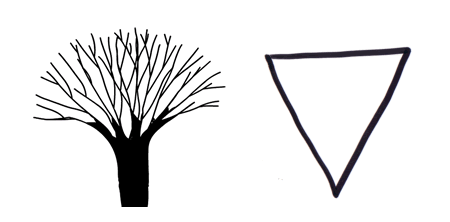
Horizontal

Curved
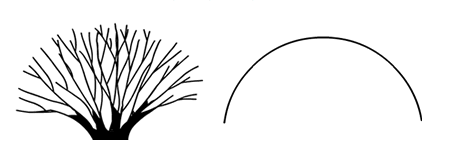
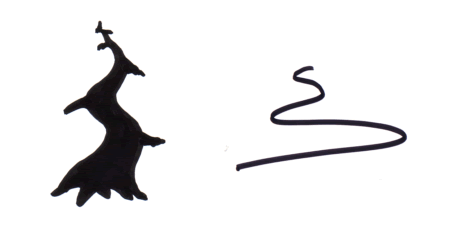

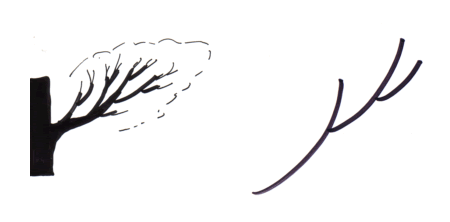
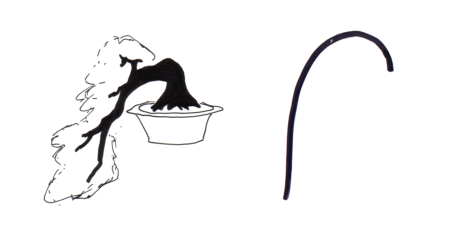
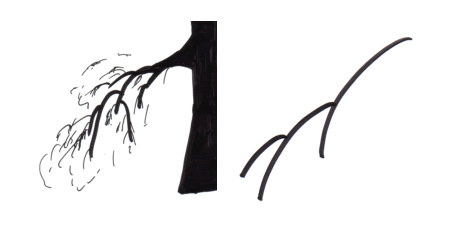
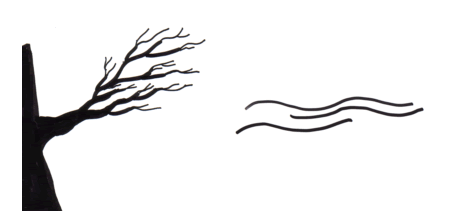
Angled

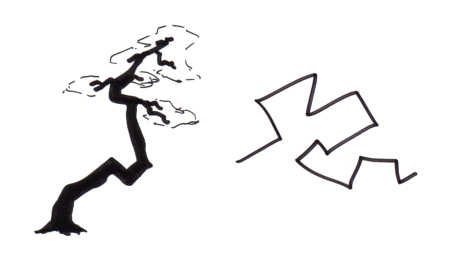

Round
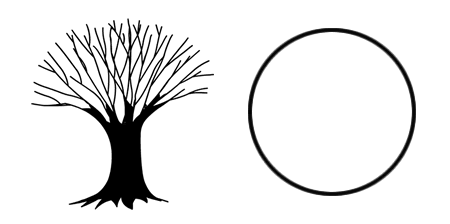
Basic Observations and Interpretations
Some general characterizations taken from the previous section can help us to form some basic definitions of line and form:
- Angular forms:
- activity, fast, masculinity, formality, harshness, poverty, struggle, roughness, stability.
- Rounded forms:
- leisure, slow, femininity, informality, comfort, luxury, calm, delicacy, instability.
You can use these basic definitions from the line/form glossary as a guide for your bonsai designs. One of these lines or shapes may be the foundation for the character of your bonsai. Generally speaking, this means that the trunk and/or the branches of your tree will be patterned after one specific theme.
This theme will merely be the basis for the character of your design. Since a bonsai and its display is composed of more than just the trunk and the branches, your artistic vocabulary and communication effort must extend beyond these basic elements. Moreover, your entire styling and presentation aims must be compatible with the overall theme of your design.
This is where artistic composition becomes important. Composition is what makes all of the separate elements work together as one; what turns a bunch of instruments and notes on a page into a beautiful symphony. We’ll examine composition in the coming chapters.
In these images below, note how the trunk and branches in each case work together toward a cohesive theme:

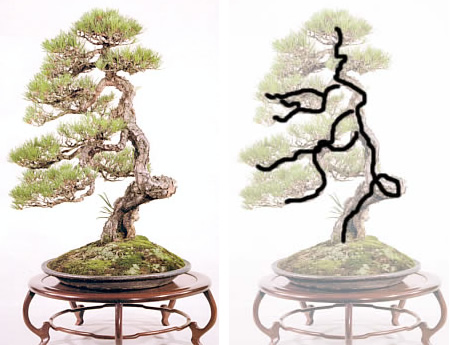
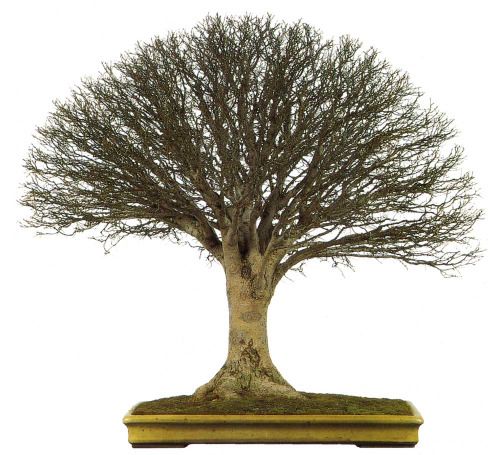
Photos courtesy of Bonsai Today.
Color
There is much to how color can be used to communicate, but some general observations are:
- Dark colors = masculinity, strength, melancholy, formality
- Light colors = femininity, delicacy, happiness, informality
Texture
As with color, textures can be used in many ways for communicative value. Some basic observations about texture are:
- Rough textures = masculinity, age, harshness, strength
- Smooth textures = femininity, youth, tranquility, delicacy
In order to have a cohesive theme, you have to have a clearly defined aim. In the next chapter, we’ll examine some of the common aims and challenges in bonsai design.